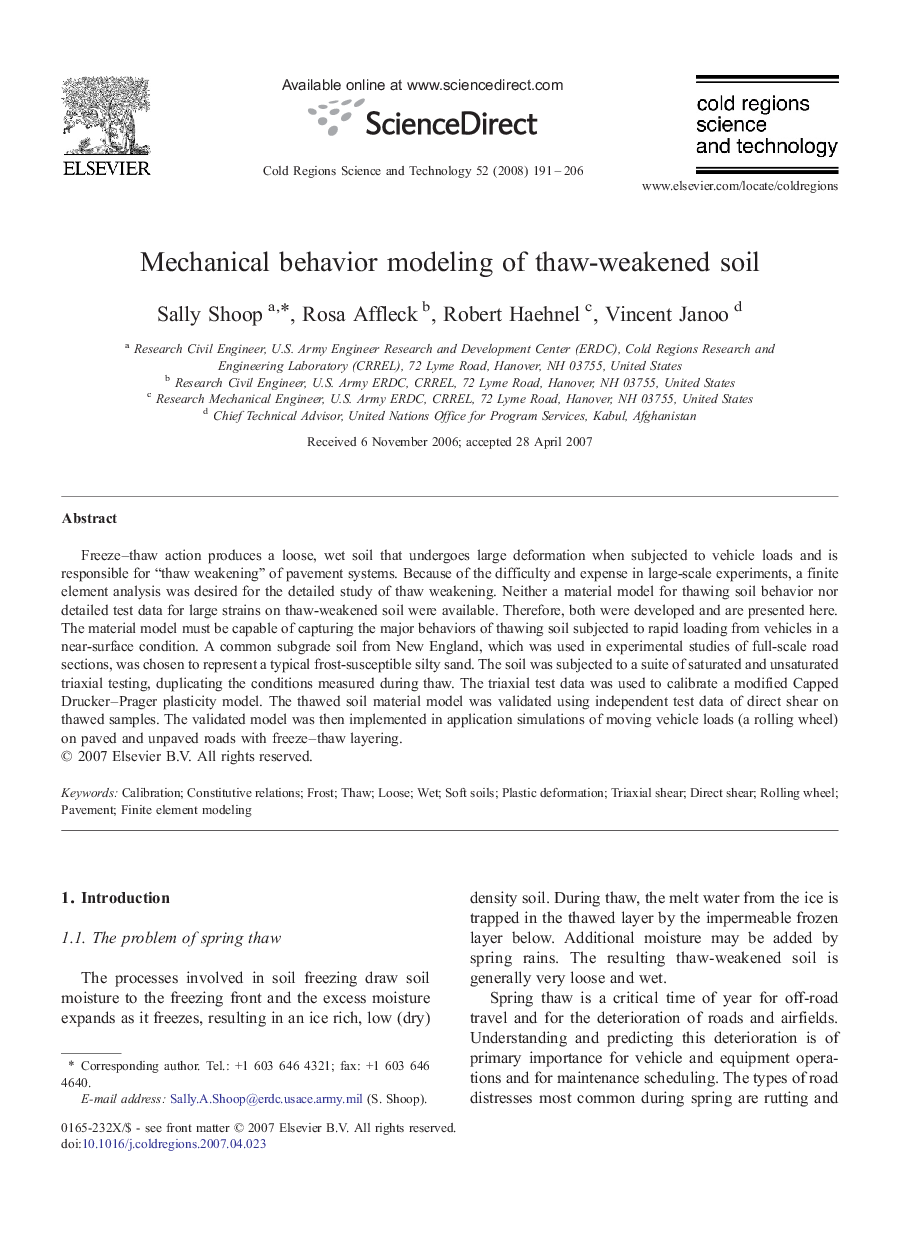| Article ID | Journal | Published Year | Pages | File Type |
|---|---|---|---|---|
| 4676639 | Cold Regions Science and Technology | 2008 | 16 Pages |
Freeze–thaw action produces a loose, wet soil that undergoes large deformation when subjected to vehicle loads and is responsible for “thaw weakening” of pavement systems. Because of the difficulty and expense in large-scale experiments, a finite element analysis was desired for the detailed study of thaw weakening. Neither a material model for thawing soil behavior nor detailed test data for large strains on thaw-weakened soil were available. Therefore, both were developed and are presented here. The material model must be capable of capturing the major behaviors of thawing soil subjected to rapid loading from vehicles in a near-surface condition. A common subgrade soil from New England, which was used in experimental studies of full-scale road sections, was chosen to represent a typical frost-susceptible silty sand. The soil was subjected to a suite of saturated and unsaturated triaxial testing, duplicating the conditions measured during thaw. The triaxial test data was used to calibrate a modified Capped Drucker–Prager plasticity model. The thawed soil material model was validated using independent test data of direct shear on thawed samples. The validated model was then implemented in application simulations of moving vehicle loads (a rolling wheel) on paved and unpaved roads with freeze–thaw layering.
